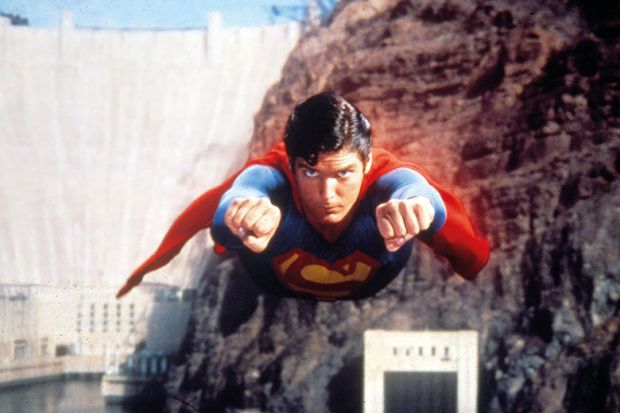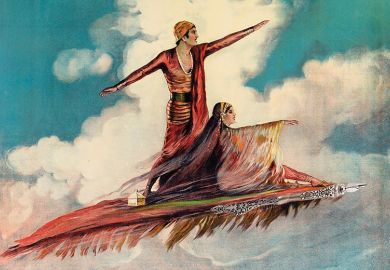What the critic John Clute has described as “the fantastika” permeates popular culture, from the fairy tale through to pantomime, in the books we read, the games we play and the television and films we watch. But it is relatively rare to see these platforms brought together in the same text: each has its own body of critics and its own critical tools. On the rare occasions critics do explore different media, it is often to raise one above the other, to identify one text as the origin, the other as the insightful or misguided adaptation.
Douglas Cowan’s Magic, Monsters and Make-Believe Heroes follows the threads of imagination, and if that means he talks about Dungeons and Dragons, Superman and Peter Pan in the same breath, so be it. There is a delightful assurance to the book. It spends no time explaining what fantasy is, and very little explaining its limits. Cowan is interested only in the way fantasy is used to tell stories, and the demarcations of fantasy and mimesis matter to him only to the degree that they are often lines of tension in the stories told – are Buffy, Robin Williams’ Peter Pan (in Steven Spielberg’s 1991 Hook) and Mia Wasikowska’s Alice (in Tim Burton’s 2010 version of Alice in Wonderland) mad, or are their delusions actually memory?
Unusually, Cowan is interested less in the product on the page or screen or table and rather more in the experience of reading, watching and playing the fantastika, in the immersive experience of it. His account is thus both highly personal and incredibly generous. This is a book that makes room for very different experiences of the fantastic.
Cowan begins with the idea of storytelling as what makes us human. This is an idea popularised by Jack Cohen, Ian Stewart and Terry Pratchett in The Science of Discworld books, where Pan narrans, the storytelling ape, explores the role of storytelling in the transmission of cultural values and gets us to think about the ways in which we resonate with parts of stories and not others. Cowan’s discussion of role-playing games and costuming play challenges the idea of passive engagement with the fantastic and replaces it with a tension between author, reader and culture that continually remixes the brew. He takes this into a discussion of the religious impulse behind the fantastic and the rationalisation of magic that renders it religion, and then segues from there to the fantasies of the film and TV industries, in which all magic must be explained and codified.
Sometimes this means digging behind the tale for a dark origin, such as the real experiences of the Grimm brothers with the supernatural or the rejection that led to Maleficent’s hatred of Snow White. At other times, Cowan shows how Hollywood has offered us fairy tale as a redemptive guide for the adult led astray. This seems to involve beating a story into submission so that the adaptive “subversion” becomes curiously tamed and tied down in meaning. Nowhere is this clearer than in Cowan’s exploration of the Hollywoodisation of the East, such as when the martial arts movie is reduced to chop-socky and the yellowed-up David Carradine in the television series Kung Fu (1972-75).
Magic, Monsters and Make-Believe Heroes is a joy to read because it gloriously and lovingly destabilises texts by reminding us that the reader/viewer/gamer is not a blank slate. In roaming across platforms, it also breaks down some of the artificial divides within the study of the fantastic.
Farah Mendlesohn, a visiting fellow at Anglia Ruskin University, is the author of many books, including The Pleasant Profession of Robert A. Heinlein (2019).
Magic, Monsters and Make-Believe Heroes: How Myth and Religion Shape Fantasy Culture
By Douglas E. Cowan
University of California Press, 240pp, £66.00 and £24.00
ISBN 9780520293984 and 9780520293991
Published 26 February 2019




